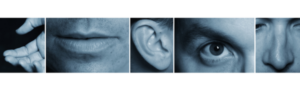I often have to remind people that aesthetics, as I define it, is less about beauty than pleasure. Specifically, it is the pleasure we derive from perceiving an object or experience through our senses.
Our life experiences are shaped by what we see, hear, feel, taste and smell. Together, these senses play a bigger role in our happiness and wellbeing that we realize.
Amid the stresses of modern life, we’ve become desensitized to stimuli — numb to the effect of our environments on our bodies and to the interactions between our five senses. Moreover, we tend to be far more attuned to our our more rational senses (sight and sound) at the expense of our more emotional ones (smell, touch and taste).
The first step in developing Aesthetic Intelligence is to unblock your senses and to become more mindful of the stimuli that surrounds you. That awakening allows you to create more pleasurable, multisensorial experiences for youself and others around you, including your customers.
We at A.I. Labs recently hosted a workshop on the science of the senses to give our students deeper insights into how the senses work – individually and interactively – and who they drive human emotions, perceptions and behaviors.
Below are just a few of our Aesthetic Aha’s from the workshop. (To learn more, you also can tune in here to our latest show on SiriusXM.)
-
Are you a supertaster?
If you hate the taste of broccoli or are tend to add salt to leafy greens to mask their bitterness, you may be what’s known as a “supertaster.” About 25% of the population qualifies as having tongues with two- to three-times as many taste buds as average tasters. As such, super tasters far more sensitive than average to different tastes, especially bitter ones. They also are less prone to drink alcohol, smoke or slice a grapefruit.
We can detect over 1 trillion distinct odors, notwithstanding the fact that we have very adjectives to describe such odors. Moreover, no two people react alike when it comes to smell. While some smells are generically unpleasant to everyone (i.e rotten food and wet dogs), our reactions to less extreme smells are far more personalized. That’s because our brain’s olfactory bulb is directly connected to our amygdala (aka, our memory center), and smells trigger stronger emotions and memories than our other senses. Smells also are deeply rooted in cultural heritage and norms. For example, the smell of clean in America is pine (as in Pine Sol); whereas in Australia, it’s tea tree oil.
There are two different touch systems through which we perceive the world. One system conveys information (e.g., location, movement or strength); the other provides social bonding (e.g., maternal nurturing, friendly hug, or sexual embrace). This latter one – the emotional touch – is fundamental for emotional development and wellbeing. That said, the degrees and styles of touch vary significantly across different cultures. Just as we each have a mother tongue, we also have a “mother touch.” This is the tactile code of communication that underpins the ways in which we engage with other people — the implicit rules about who can touch whom, where and in what manner. These rules are shaped by culture and individual upbringing. Did you know Argentinians are considered the most touchy-feely people? In contrast, the Japanese have the world’s lowest tolerance for “skinship.”
The effects of sound extend well beyond our cognitive functions. They affect our
- Physiology – The sound of this siren will activate your flight-or-flight response, while listening to this white noise will lull you to sleep
- Moods – The universal tendency to mimic the emotions of what we hear makes us, for example, happy while listening to Abba and melancholy while listening to Eric Clapton
- Behaviors – There’s a reason that gyms typically play loud, thumping music. High tempos make us move faster, while slow tempos slow us down. This also explains why retail stores often play soft ambient music; it compels customers to linger and ultimately buy more.
Researchers have discovered that language actually trains our brain to perceive colors more acutely and precisely. In other words, once we’ve assigned a name to a particular color, our perception of it sharpens, as does our ability to distinguish it from other similar colors. As evidence, the Himba people of Namibia, who do not have different words for blue and green, have difficulty differentiating these two hues.